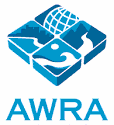AWRA Annual Conference This Week Explored Water Resource Issues and Challenges
 The American Water Resources Association (AWRA) held its Annual Conference this week in Baltimore, Maryland. Ben Grumbles, Secretary of the Environment for the Maryland Department of Environment was the keynote speaker for the opening session where he talked about “Embracing the facts in science for policymaking.” He also emphasized the need for integrated, watershed-based planning for water quality and quantity, and spoke about challenges with meeting Chesapeake Bay nutrient reduction goals.
The American Water Resources Association (AWRA) held its Annual Conference this week in Baltimore, Maryland. Ben Grumbles, Secretary of the Environment for the Maryland Department of Environment was the keynote speaker for the opening session where he talked about “Embracing the facts in science for policymaking.” He also emphasized the need for integrated, watershed-based planning for water quality and quantity, and spoke about challenges with meeting Chesapeake Bay nutrient reduction goals.
The conference included many concurrent sessions and presentations from university researchers, the water resource community, and a few states on: science, data, and modeling for hydrologic functions; reservoir and groundwater management; water resiliency planning; protection and restoration efforts to reduce nutrient loads from forest and agriculture lands in the Chesapeake Bay, Delaware River Basin, and other areas across the nation; and more. Some conference sessions and presentations that should be of interest to state drinking water programs include:
- A session on emerging contaminants that shared information about the efforts of the Delaware River Basin Commission to monitor for 13 PFAS compounds by piggy-backing on PCB monitoring to meet Clean Water Act (CWA) water quality standards. And while the monitoring found no exceedances of EPA’s heath advisory levels for PFOA and PFOS, they were able to work with a responsible party to address PFNA in the basin, that ultimately provided input for New Jersey’s new PFNA regulatory standard.
- A session by the US Forest Service (USFS) on developing watershed investment partnerships to fund forest conservation and management projects on USFS state and private forested lands to achieve co-benefits for communities such as providing clean drinking water, recreation, wildlife habitat, a shared sense of regional identity, and jobs and volunteer opportunities. Some examples of current efforts include the Virginia Department of Transportation’s nutrient credit trading program to keep land in forests; USFS’s work with the US Army Corps of Engineers on CWA activities to transfer nearby land to the USFS for long term stewardship; and EPA’s Chesapeake Bay credit program for preservation of forests to protect the bay against impacts of development.
- Several presentations on data trends and modeling used to quantify the benefits of restoration versus protection and prioritize land parcels for conservation to reduce nutrient and sediment loads for drinking water and water quality protection and improvement in the Delaware and Susquehanna River Basins. The keys to success for implementing conservation projects include the need for a confluence of politics, data and models, and landowner willingness.
- A community engagement session from leaders of the Delaware River Watershed Initiative to “Turn Interest into Action,” that highlighted the need to balance advocacy with curiosity and observation and listen to and inform key stakeholders for community buy-in and engagement on projects to protect water quality and quantity.
- A session about managing in-stream flows in Virginia using the state’s integrated water data management system for hydro-ecological framework data acquisition, modeling, and analysis. The data system, while primarily used for analyzing in-stream flows and water withdrawal impacts on species and habitat, includes a registration database for new private and public drinking water wells. Over 6,000 wells have been recorded in the last few years, and the state drinking water program can now track them via this data system.
For more information about AWRA and the Annual Conference, visit the AWRA website.

